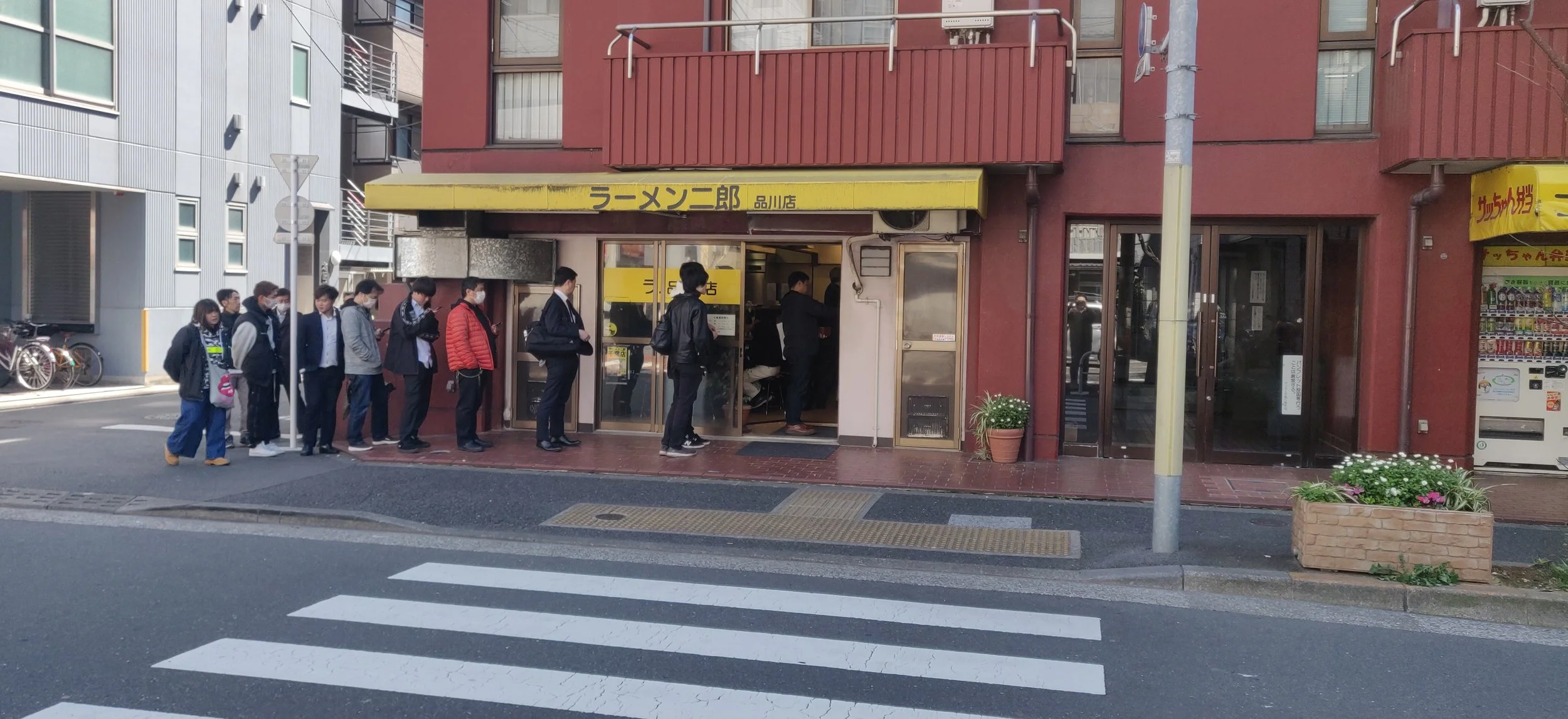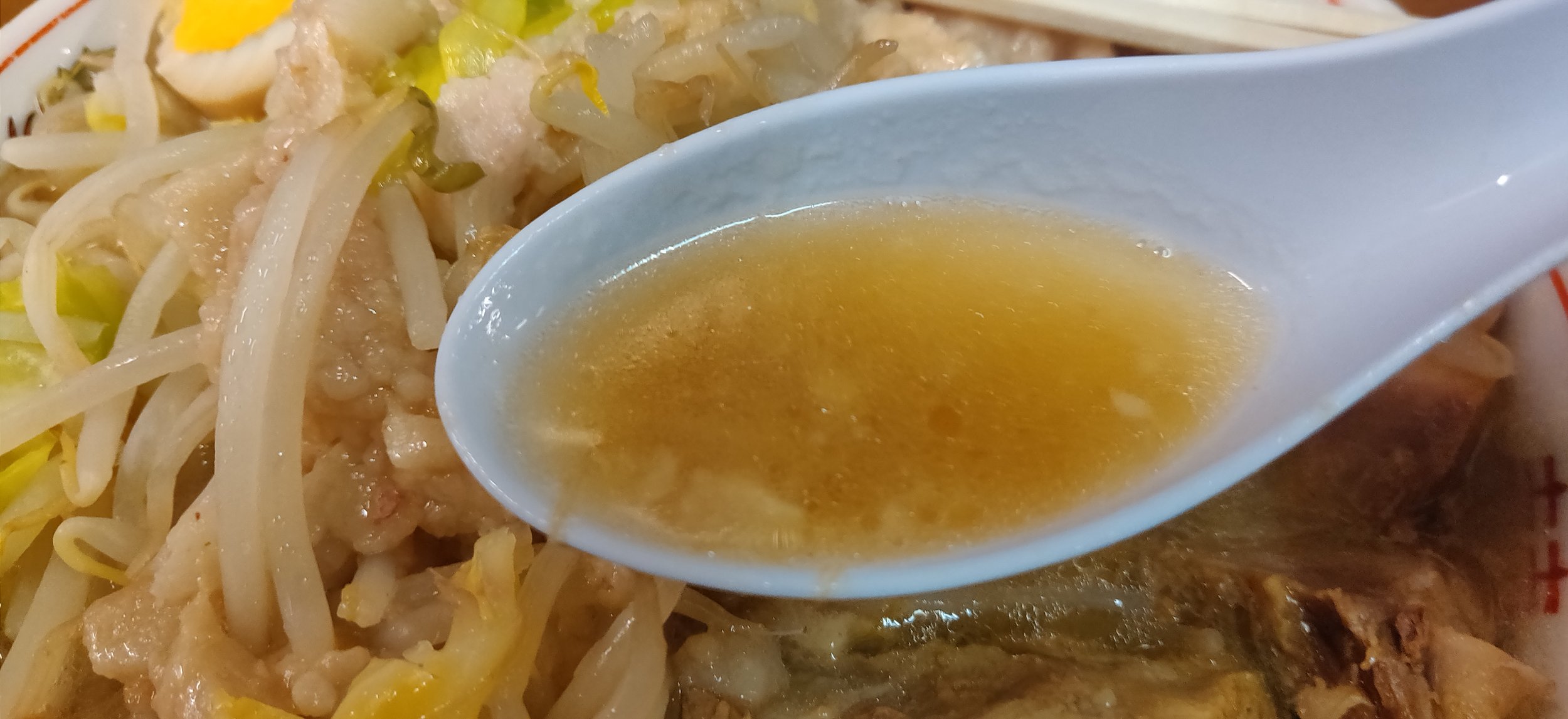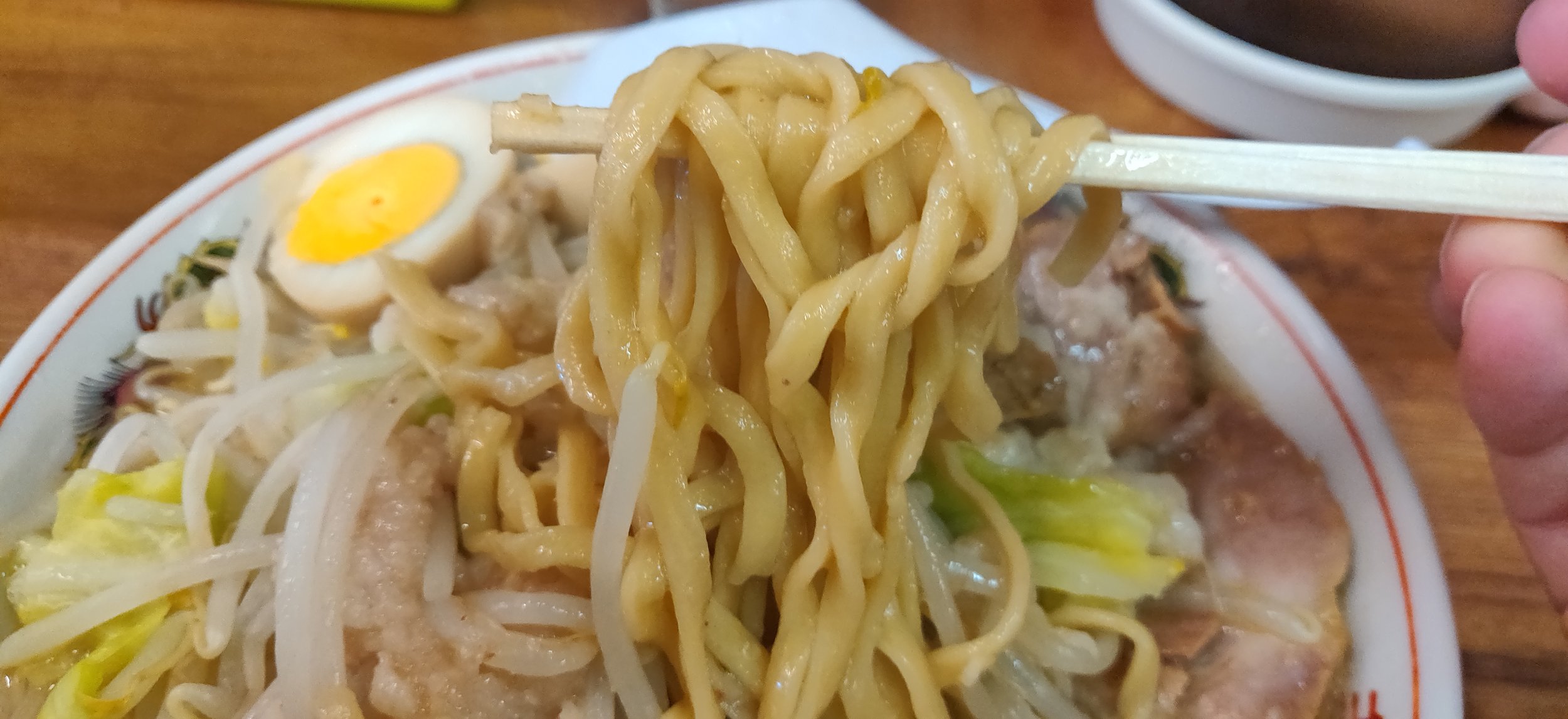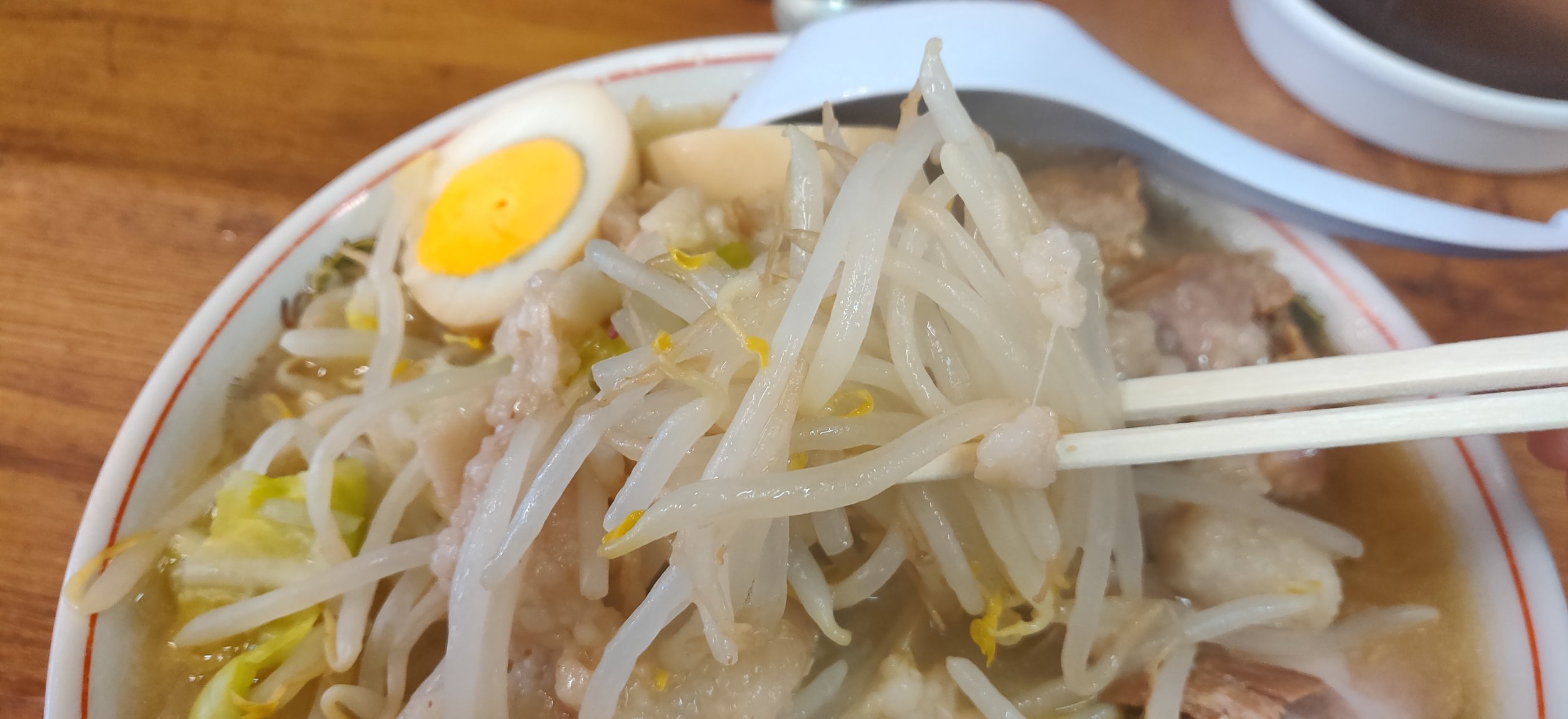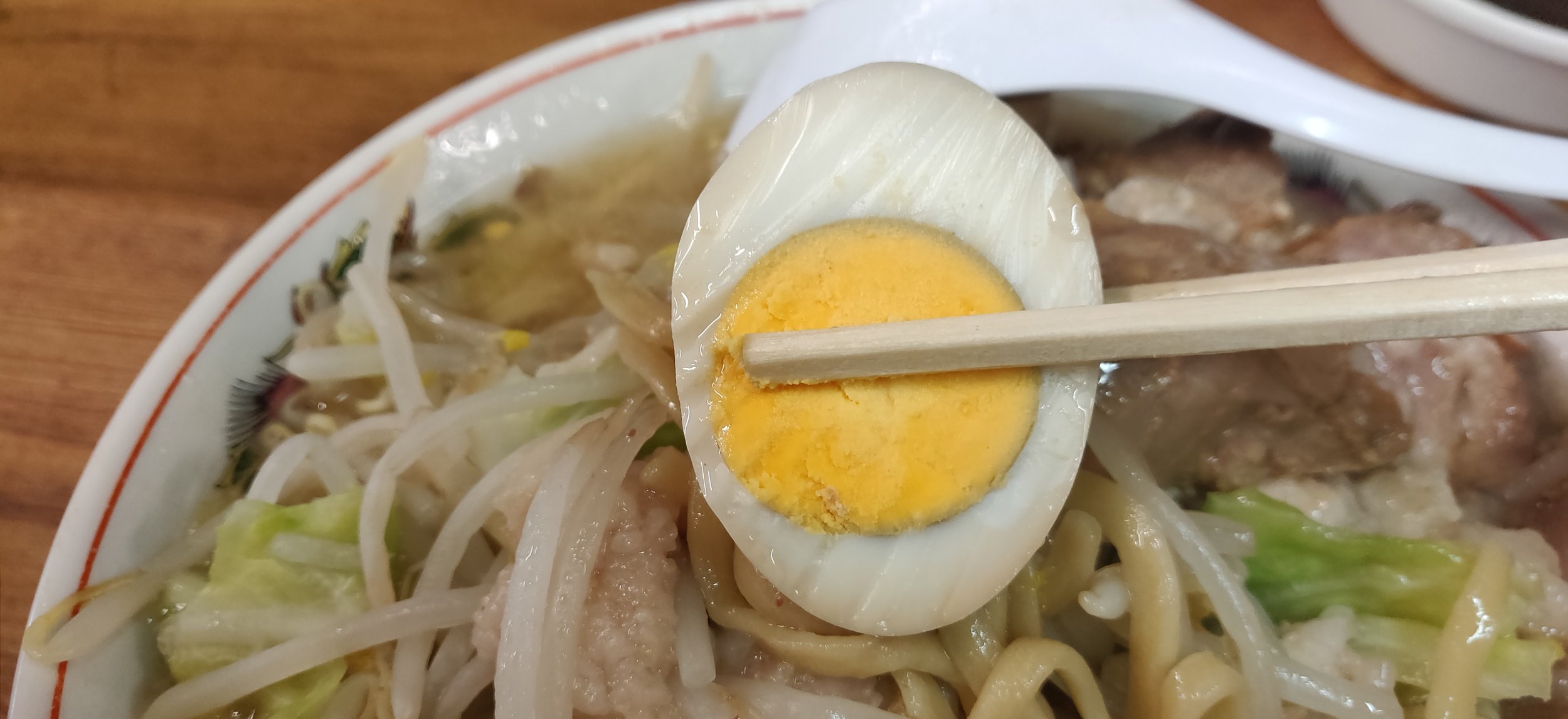Ramen Jiro Shinagawa (ラーメン二郎品川店): The Working Man’s Jiro; Shinagawa, Tokyo
Ramen Jiro Shinagawa is one of the lower ranked shops of the 41 locations, but remains one of the most popular and garners a line regardless of day or time. Why? Well this is the working man’s Jiro and the countless construction and office workers with offices nearby flock to the shop daily to get their lunch and/or post work, dinner fix. Not gonna lie, I’ll tell you right now that this is one of my least favorite shops, but this could be my personal Jiro preference talking as there are a number of people with a specific Jiro preference that love this location. Anyways, the Shinagawa shop is open from Monday through Friday from 11:00 to 14:00 for lunch and 17:00 to 20:30 for dinner. On Saturdays the shop is open only for lunch from 11:00 to 13:30 and is closed on Sundays.
Pretty simple ticket machine here. The first row up top is the small ramen, small ramen with extra pork chashu and small ramen with double pork chashu on the far right. Second row is the large, then large with extra pork, and large with double pork on the far right. Third row is the hard boiled egg and negi. No tsukemen or no soup options here and the portions are massive so be careful when ordering. Buy your tickets as you get in to the shop and you’ll be asked to line up along the back wall once you do. The master may sometimes ask you what you ordered while in line and if he does, just flash him your ticket. Once the master tells you a seat is open, grab some water and sit down. Place your tickets up on the counter and when your ramen is ready, he’ll ask “Ninnikuwa?”, which is the signal for the which toppings you want and how much of it. Yasai (vegetables consisting of blanched cabbage and bean sprouts), Ninniku (pressed garlic), Abura (pork fat), and Karame (seasoning sauce) are all free of charge and when the chef asks what you’d like, you call out which toppings you would like and how much of each. If you say each topping, you will get an average amount of those toppings. If you want a little extra of a certain topping, you can say “Mashi” after which ever topping you want more of. “Mashi-Mashi” will be even more of said topping. So for instance, if you wanted no garlic, extra vegetables, and normal pork fat and seasoning sauce, you would say “Yasai mashi, abura, karame”. If you want extra of all the toppings you can say “Zen-Mashi”, or everything extra.
My order for the day was Sho Buta with the hard boiled egg topping and the call was Zen-Mashi, or extra everything. Not too sure what I was thinking, was a bit hungry so got a little cocky, but I do not recommend first timers doing what I did. So as you can see from the photo, Shinagawa is one of the shops with the more emulsified soups. I personally don’t like a lot of heavy emulsion soups like Hakata style Tonkotsu or Tori Paitan which is why when it comes to Jiro, I prefer the less emulsified version, but if you do like a bit of a creamier broth, this is the shop for you. It’s really just a personal preference and while this isn’t my favorite style of Jiro, I’ll try and describe it as objectively as possible. So when a Jiro soup is heavy on the emulsification, that doesn’t necessarily mean it is creamier or more dense like you might think with a paitan. With Jiro the terms refers to how much of the oil is mixed in to the soup and you can tell visually by how opaque the soup is.
Flavor wise the Shinagawa soup is a bit more well rounded and doesn’t have the initial salty bite and kick that a lower emulsion Jiro soup has. Pork flavors are a bit more pronounced, but the msg and shoyu tare, or karame, is mellowed as it all kind of meshes together as one cohesive unit. I personally prefer having a sharper shoyu flavor and a distinct separation of pork and soy sauce, but I can enjoy this style when in the mood. Also, since Jiro soup has pork back fat added throughout the day, fresh oil is rendered out, but not always emulsified into the broth, so not only do you get the fattiness in the soup, but you also get it floating on the surface which can be a bit much for some people.
As for the noodles, Shinagawa doesn’t have quite as curly strands that some people crave and is more of a flatter, sheeted cut. They are also a tad thicker than the average Jiro shop which makes it incredibly filling. The O-shon flour and kansui aromas are incredibly pronounced here so each strand can really stand on its own which is nice. It has a distinct flavor profile that doesn’t lose out to the emulsified soup for a well balanced slurp. For the small with extra pork chashu, I received 5 generous cuts and if I were to guess, I probably had about 500 grams of just chashu. Combine that with the noodles, you’re looking at over 1kg of food easily, so again, be aware when making your order. Personally, I thought the pork was the best part of the meal and the marinade soaked all the way through ensuring I got a flavorful bite each and every time. Also, the chashu is rested in the fridge and so it maintains its shape and didn’t just melt in between my chopsticks which I really appreciated.
As for the paid topping of the egg…well I’ll let you decide whether you want it or not, but I definitely won’t be ordering it again. For the free toppings, the abura was a bit much. Given how emulsified the soup is and how oily each spoonful is, the added abura is overkill and was just way too much. I did enjoy the yasai, or veggies though as it actually had some discernable cabbage cuts that you rarely see nowadays.
All in all, if I were in the right mood and craving, I would definitely crush a bowl of Shinagawa Jiro, but with how long the wait can be and how rare I get those cravings, it remains at the bottom of shops to repeat. If you do end up going however, I would say check out the Hibarigaoka location as well which is known to be the best of the heavy emulsion Jiros. And if you want to learn more about Jiro, I have written a pretty comprehensive eBook guide on the culture and history of the style if you want to check it out here.
